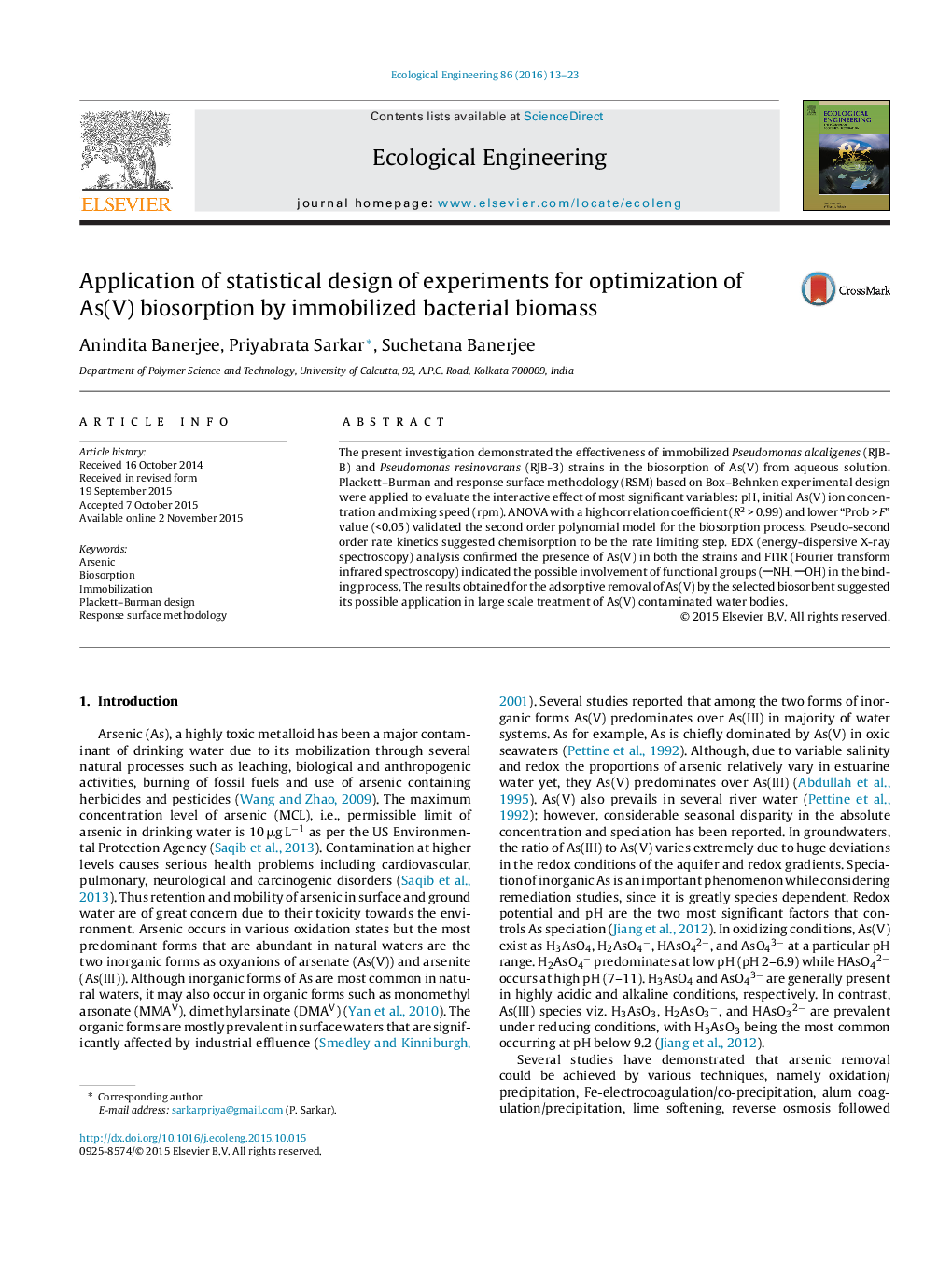| Article ID | Journal | Published Year | Pages | File Type |
|---|---|---|---|---|
| 4388909 | Ecological Engineering | 2016 | 11 Pages |
•Bacterial isolates were immobilized on Ca-alginate for uptake of As(V).•Statistical designs were applied for optimization of process variables.•Maximum uptake (465 μg L−1 and 425 μg L−1 in RJB-B and RJB-3) observed at pH 4.0.•Pseudo second order rate model described chemisorption as rate limiting step.•Interaction between adsorbate and adsorbent was elucidated by FTIR and EDAX.
The present investigation demonstrated the effectiveness of immobilized Pseudomonas alcaligenes (RJB-B) and Pseudomonas resinovorans (RJB-3) strains in the biosorption of As(V) from aqueous solution. Plackett–Burman and response surface methodology (RSM) based on Box–Behnken experimental design were applied to evaluate the interactive effect of most significant variables: pH, initial As(V) ion concentration and mixing speed (rpm). ANOVA with a high correlation coefficient (R2 > 0.99) and lower “Prob > F” value (<0.05) validated the second order polynomial model for the biosorption process. Pseudo-second order rate kinetics suggested chemisorption to be the rate limiting step. EDX (energy-dispersive X-ray spectroscopy) analysis confirmed the presence of As(V) in both the strains and FTIR (Fourier transform infrared spectroscopy) indicated the possible involvement of functional groups (NH, OH) in the binding process. The results obtained for the adsorptive removal of As(V) by the selected biosorbent suggested its possible application in large scale treatment of As(V) contaminated water bodies.
